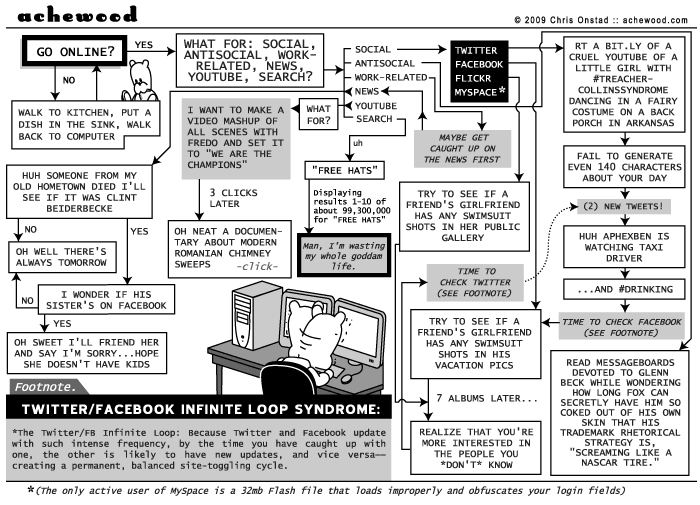I was talking to some people yesterday about churches and social media strategies. I’ve followed a bunch of people who are involved with ministries, and churches, and promoting ministries and churches on Facebook. And I think they’re doing it wrong… but what would I know.
The wrongness was the spirit of my speculative posts “Has John Piper ruined Twitter” and “Has Mark Driscoll ruined Facebook” – most churches rely on their minister posting pithy one line updates to Facebook and Twitter generating an echo effect where people retweet and like and share to their hearts content. Which is only part of the social media story, and is usually pretty lame. Blowing one’s own trumpet is never cool. No matter how good your faux-hawk is, and no matter how much you’re able to make grown men cry in your sermons. Don’t get me wrong. I appreciate Desiring God and Mars Hill, and Piper and Driscoll, and I think they contribute greatly to the global church and use the Internet brilliantly. But you’re not (unless they’re reading this) Piper or Driscoll. And if you’re a minister of a church and you’re filling my Facebook or Twitter news feeds with how much God is moving in your church, or how great your sermon was, or how great it was to spend time with your church family – and that’s all your doing – then that’s really not why I’ve added you Twitter in particular, or probably, being really honest, on Facebook. I’ve added a person, not a ministry PR machine. I want your reflections on stuff, and if you’re a minister then that will doubtless include stuff about your church and your ministry, and how much you love your people, and how awesome they all are… but please, don’t be a two dimensional caricature. You are not your church. Get a Facebook page for your ministry – but even then, don’t be lame about it. Don’t just spam people with endless things about how good the stuff they were already at was, and don’t spam them with things about upcoming events.
Social media is social. It’s meant to be interactive. The best social media strategies do what is called “seeding” content. You don’t blow your own trumpet. You get others to blow it for you. If you run a church Facebook account, or Twitter account, why not ask a bunch of tech savvy people at church to post their own thoughts, advertisements, photos or reflections to TwitFace? Why not ask people to live tweet certain events, or go home and serve their brothers and sisters by posting the thing that struck them most about the sermon. Don’t do it yourself. Why not get people to post photos of your events, get them to make them their profile pictures. Get them to talk to each other (that’ll show up in the news feed of mutual friends). Get them organically promoting events and inviting their friends personally, rather than sending out some form email.
Social media works best when it is social media – when people are participating in the production and distribution of content – rather than just contributing to the noise side of the signal to noise ratio on the internet. People’s inboxes (in all virtual forms) are so full of rubbish and spam – why not contribute some meaningful content and interactions to their lives instead of just trying to be an ever present presence online.
And if none of that seems to work, if you can’t get people saying stuff about your church online, then maybe consider this webcomic (via ChurchCrunch)…



